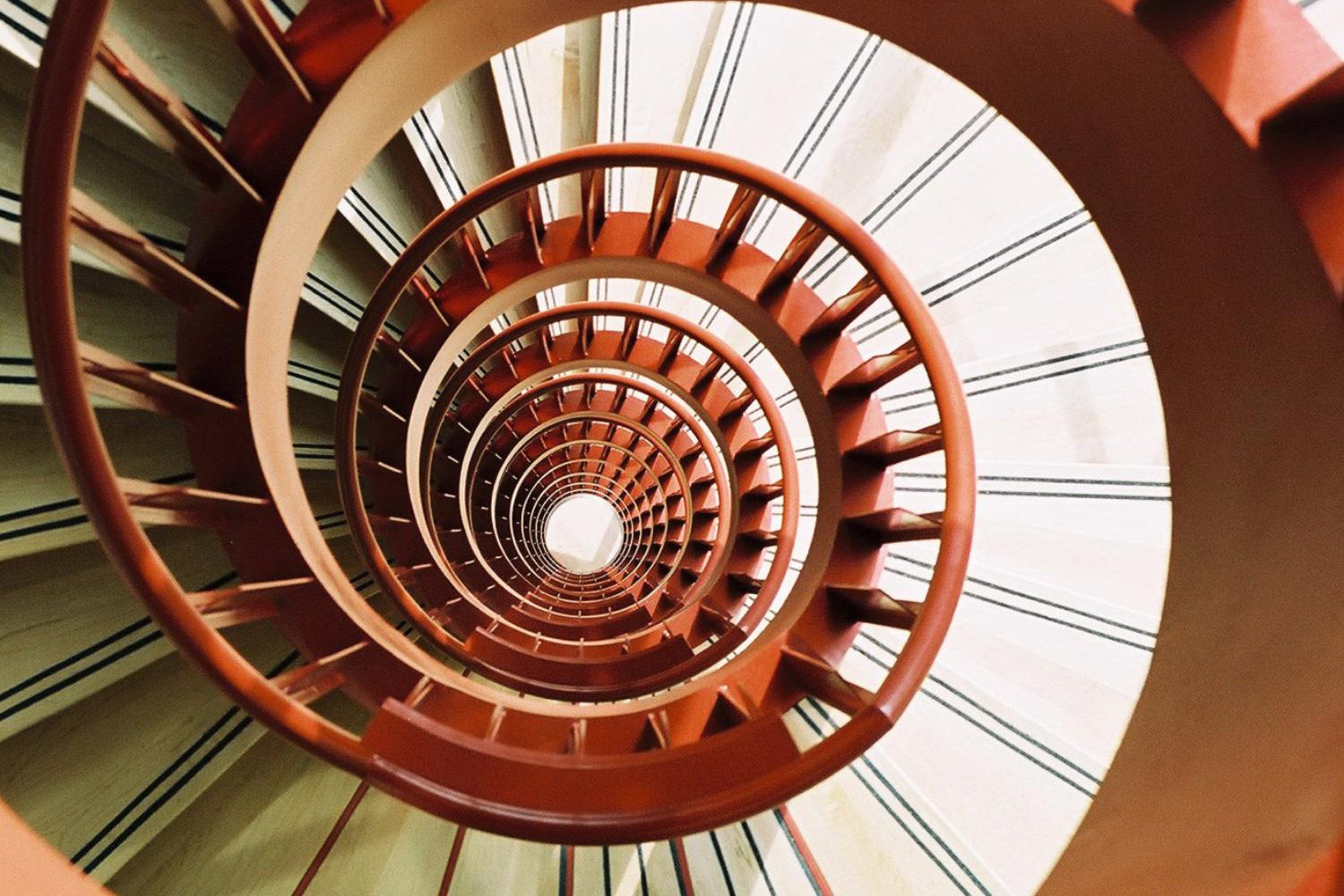Lines, patterns, symmetry, and interesting shapes are common compositional elements, and have long been used by photographers to produce intriguing shots, lead the viewer's eye, and give their photos a dynamic feel.
Staircases contain all of these elements in abundance, which makes them surprisingly interesting subjects to photograph. Once you begin paying more attention to them, you'll also notice just how varied they can be, and how many hidden details they contain.
Photographing staircases is largely about applying tried-and-true photography composition techniques to a often-overlooked subject. In doing so, you'll be able to find some hidden gems where most people wouldn't even think of looking.
Lead the Eye
Staircases by their very nature lead somewhere, so use this to your advantage - choose a viewpoint that hides the far end of the staircase, enticing the viewer to wonder where it could lead. This "mental exploration" adds mystery and engages the viewer.
Use the natural 'movement' of the staircase to lead the viewer's eye. Image by Thomas Hawk.
Leading lines are a great way to draw your viewer's eye through your scene. Banisters and handrails are particularly useful for this, so position yourself so that they create an interesting path through the photo.
Use Natural Curves
When photographing curving staircases, show off their sweeping lines to give the image a natural and dynamic feel. A wide angle lens is perfect for exaggerating the contours of a twisting staircase. Also, place the main focal point off-centre to help give the photo more balance.
The curves of a sweeping staircase can create lend your photo an organic feel. Image by slightly-less-random.
Show Off the Symmetry
Many staircases are constructed in a way that gives them an obvious symmetry. Exploit this by positioning yourself right in the middle of the line of symmetry and arranging your composition so that the symmetry becomes the main point of interest in the photo.
A symmetrical staircase is often best photographed by moving back as far as you can and zooming in, or even using a telephoto lens. This flattens any distortion caused by perspective, making the symmetry even more prominent.
Symmetry reinforces the solid nature of stairs, and provides a focal point. Image by Designated Disaster.
Find an Unusual Viewpoint
When taking a photo of a set of stairs it can be all too easy to just stand at the bottom, frame the steps, and take the snap. However, you can create some much more interesting and unusual photos by taking the time to find a less obvious angle or viewpoint.
Experiment with different angles to add an abstract element to your shots. Image by Reto Fetz.
For example:
-
Try shooting your staircase from high above or from near ground level.
-
Turn the camera to an interesting angle.
-
Use your camera to peer through the gaps between the steps.
All of these are views that we're less used to seeing, meaning they will often produce a more intriguing photo.
